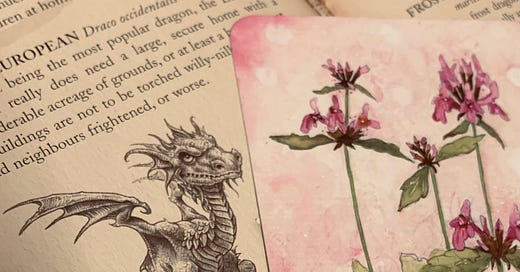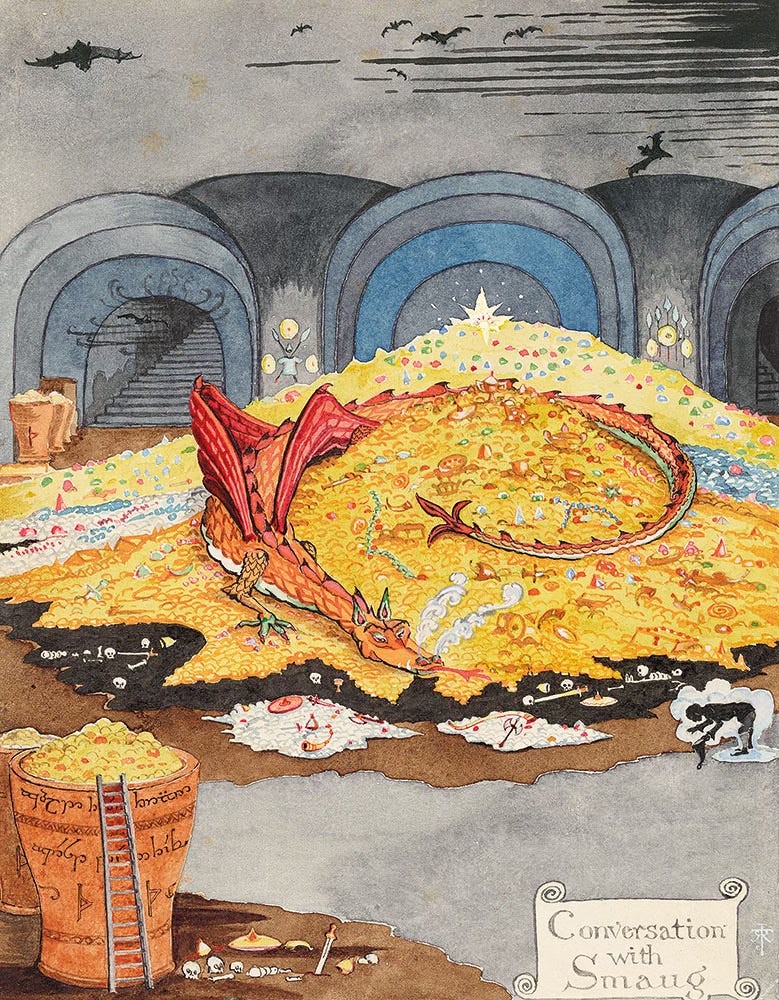“Now, Attorlaðe, the lesser shall drive out the greater, and the greater the lesser until the cure for both be with him.”
The fifth herb invoked in the Nine Herbs Charm is a plant known only across the extant early medieval herbal texts as Attorlaðe. In modern English this translates to ‘venom-hater’. Unlike most other medicinal plants used in the western tradition where we can trace their use by their various names throughout their history from the classical period to now, we can’t with Attorlaðe, and this proves obviously problematic when trying to recreate the Charm. Depending on the scholar and the lens through which they examine the Charm, at least five different herbs have been suggested, and vastly different herbs at that. These suggestions include Fumitory (Fumaria officinialis), Cockspur grass (Echinochloa crus-galli), Black Nightshade (Solanum nigra), Wood Betony (Betonica officinalis Syn. Stachys officinalis), and Corydalis solida. So through my lens as a herbalist who is not only looking at the medicinal actions of each herb, as well as its fit in the gestalt of the whole formula, and taking into account availability in both whether I could wildcraft it or find it in commerce, I had to make an educated guess as to which herb would be my Attorlaðe. I chose Wood Betony, although admittedly this is also referred to as Betonica in the extant manuscripts. I did seriously consider Black Nightshade (Solanum nigrum) as my first choice; however, I could not find it in my foraging forays (and it didn’t appear like Lamb’s Cress did) and it’s certainly not available in commerce in this country. I went with Wood Betony which was readily available and without any divine signs of stoppage, I proceeded.
Knowing that Wood Betony probably wasn’t the original Attorlaðe, I had to then figure out how I was going to approach this whilst honouring the Charm as a whole, being mindful of how this alteration might change its overall effect, also honouring the plant once known as Attorlaðe, and Wood Betony for stepping in as my substitute. Could I pull it off? As it turned out, Nettle obviously knew what was coming and decided to give me some guidance. Hence the instruction to read Sigurd’s encounter with the dragon Fafnir.
In my previous post about Lamb’s Cress and its synchronous appearance, further synchronicities happened with Sigurd’s story. The day after Nettle’s instruction, and the first day of sitting in contemplation with Attorlaðe, I found that two people that I follow on social media both simultaneously posted content about this particular story. They can be found here
and here; https://substack.com/@imeldaalmqvist/p-165457624 . When things happen in threes that’s my sign to pay attention. And thus, my journey began.
Journey to Attorlaðe with Wood Betony
“Essentially we are all Attorlaðe” says the collective that is the wight of Wood Betony. “We can all play that role because we all hate the venom like he does. There is a plant called Attorlaðe, who is the wisest of all, but he has long been forgotten by your wortcunners.” (Nothing else is forthcoming about this.)
I ask about the meaning of lesser and greater and who or what they are.
“These are the symptoms and the diseases. This is the wisdom of Attorlaðe, to discern which need is greater in the sick person, which disease needs healing first. Attorlaðe is for the healer to know this and the path and the direction of cure – as above so below as within so without.”
I ask about the relationship to Woden.
“Woden is the wise healer who discerns the diseases and determines the glory-rods – a kenning for the herbs needed to heal each one. He knows the lesser and the greater need, the greater and the lesser wyrt.”
Wood Betony then asks if I did the homework set by Nettle about the story of Sigurd and the dragon Fafnir. I affirm yes and that since that instruction it also appeared twice more. They tell me that this story illustrates the essence of Attorlaðe. “Sigurd the hero is lesser than Fafnir the dragon who is greater. Sigurd, at his foster father Regin’s request, overcomes Fafnir by killing him, and in turn Fafnir overcomes what has driven Sigurd when Sigurd burns his thumb on the roasting dragon’s heart and gains the wisdom to know the language of the birds, and then hearing their warning, kills Fafnir’s brother Regin who was plotting to kill him. Both forms of greed needed to be cured. The greed of Fafnir was the greater, Regin’s greed the lesser and its symptom was vengeance by proxy. The cure is enacted when Sigurd eats both Fafnir’s heart and drinks Regin’s blood. Like cures like. Both Fafnir and Regin were essentially greedy, but Fafnir’s greed was the greater because its venom turned him into the dragon”
I make a note to consider this allegory some more in my own time. I ask then how Wood Betony fulfills the role of Attorlaðe. They reply “to keep the healer grounded and connected, to protect them from entities like the dragon spirit of Fafnir so their discernment remains. The healer we speak of is both within and without.”
At this point, Wood Betony reflects that I have my own dragons to deal with just now and tells me to come again tomorrow so they can tell me more about their role.
….
My second journey to Wood Betony begins differently than usual. I am sat on a small hillock in a valley in Utisetta. It is cold and just breaking dawn. The large cat who accompanied me on the previous journey is sitting patiently watching me. A single raven’s feather floats from the sky and lands in my lap. It is time.
I greet and offer to Wood Betony growing next to the clear stream that runs through the frithgarð. They tell me before I even ask that my thoughts about sepsis were correct and yes, they help move the toxins. I tell them that part of the reason I chose Wood Betony as Attorlaðe was because of the folklore that it prevents and stops fearie abduction. They confirm this and tell me why, again reiterating this from the previous conversation. They help one to be grounded and more embodied. An ungrounded person, a person too much in their head and disconnected from their wholeness is vulnerable to being taken. “Think of your nervous system, we are mints after all. We keep the healer grounded, both the healer within and the healer who attends. You are too much in your head sometimes.” I know.
“What did you feel when you drank from us yesterday?” they ask me. I tell them that I started to feel a headache coming on. “We stir up the shadows to expose what is hiding. Where do you feel us in your body now? We are helping you to be more embodied.” I say that I feel a heaviness in my mid-back. “What is there?” they prompt. “Liver, kidneys, portal vein…”
They continue. “Do you remember in the story of Sigurd, where Wodan shows him to dig other pits to channel away the poison blood shed from the dragon so it wouldn’t harm Sigurd?” I remember. “This is also what we do. Capillaries and diffusion and clearing channels.” I can’t help myself and my thoughts start wandering to what this would look like in practice such as in the treatment of bruising. My thoughts are heard. “yes, we are a mint, and we are warming and diffusive. This is how we move venom. This is how we also expose things in the shadows so they can then be moved on. The deeper things – remember this about these deeper things.”
This is all they wish to share with me, satisfied that I will understand their message. I thank the Wood Betony and take my leave. The associated rune is Kennaz.
Several revelations came out of this connection in regard to the god Woden/Oðinn himself, that I will share at the end of the whole working. And both my work with Nettle and then with Attorlaðe revealed a pivotal moment in this whole process about myself in this journey through the Nine Herb Charm and my understanding of what the Charm is really about. I hope you stick around to find out.
Chamomile is next. See you then.
Blessings from a wayward wanderer,
Michelle x






